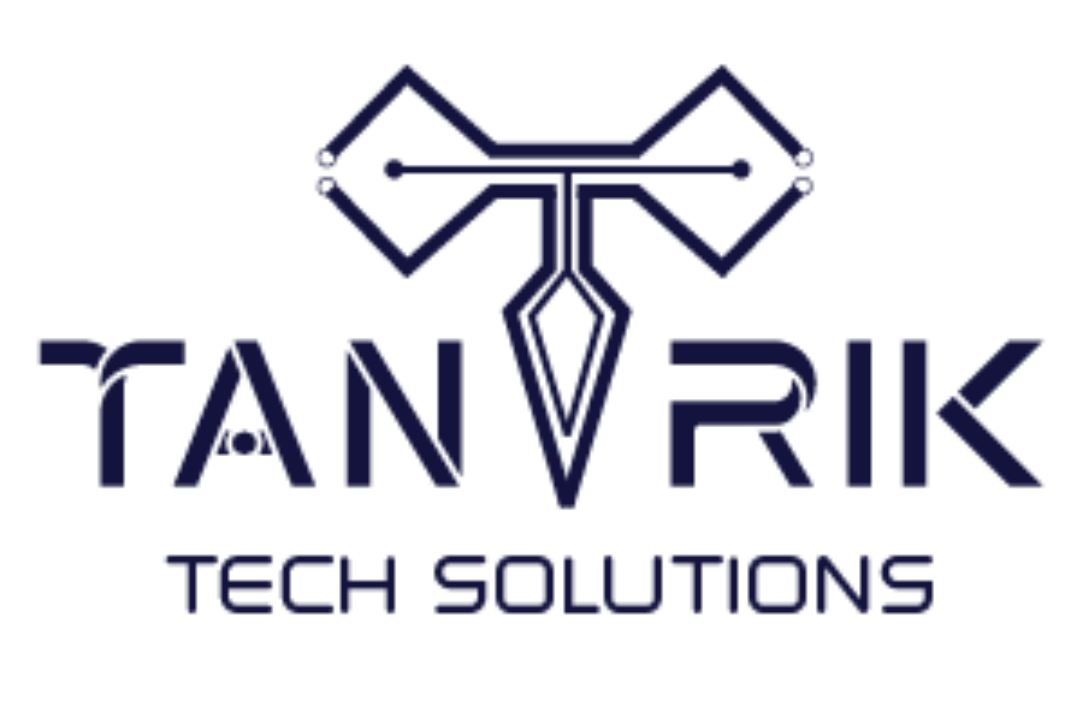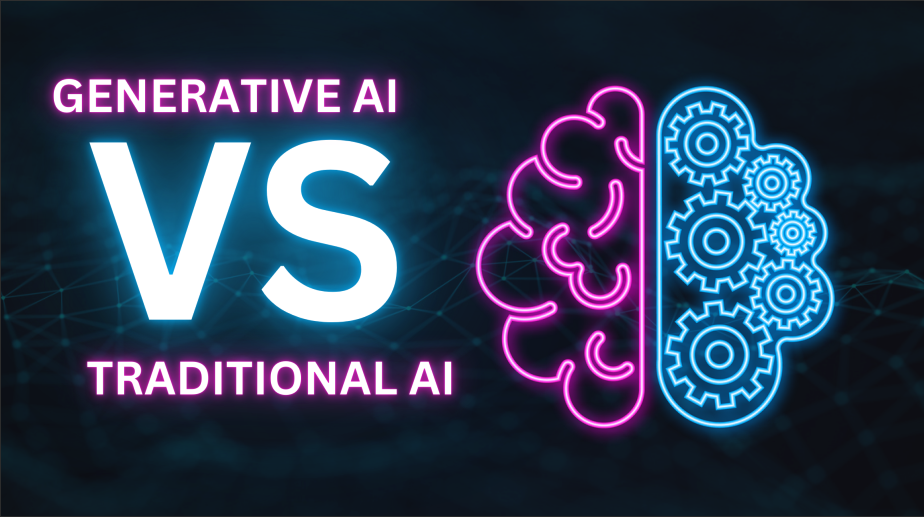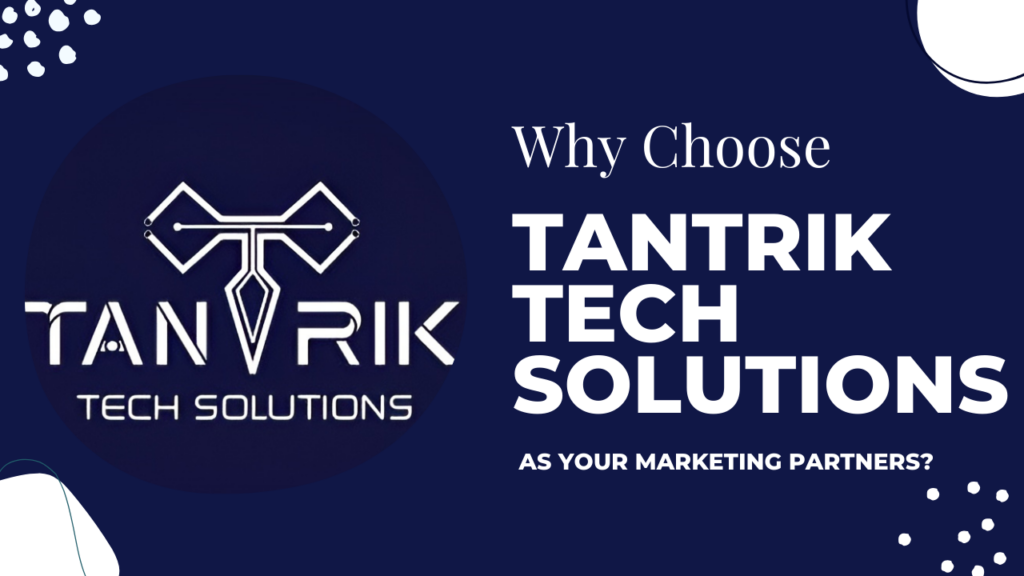Introduction
Artificial Intelligence (AI) is transforming industries, enhancing business efficiency, and driving innovation. However, AI is not a one-size-fits-all solution; it comes in various forms, each suited for different applications. Among these, Generative AI and Traditional AI represent two distinct approaches. Understanding their differences is crucial for businesses, developers, and anyone interested in the future of technology. This guide explores these differences, highlighting why they matter and how to choose the right approach.
What is Traditional AI?
Definition and Key Features
Traditional AI, also known as rule-based AI or predictive AI, involves creating models that analyze and make predictions based on data. It relies on predefined rules, algorithms, and patterns to perform specific tasks. This type of AI excels at tasks like classification, automation, and forecasting, using statistical and machine learning (ML) techniques to optimize outcomes.
Examples of Traditional AI Applications
Traditional AI applications include:
- Chatbots: Rule-based bots that provide customer support by recognizing specific keywords.
- Fraud Detection Systems: AI models analyzing transactions for patterns associated with fraudulent behavior.
- Predictive Analytics: Systems that forecast stock prices, weather conditions, or consumer behavior based on historical data.
Common Algorithms and Techniques Used in Traditional AI
Traditional AI often uses algorithms like Decision Trees, Linear Regression, and Support Vector Machines (SVMs). These models focus on finding correlations and making predictions based on input data, allowing for precise, consistent outcomes.
What is Generative AI?
Definition and Core Concepts
Generative AI goes beyond prediction—it creates. This AI model uses neural networks, particularly advanced forms like Generative Adversarial Networks (GANs) and Transformer models (e.g., GPT-3), to generate new content that resembles the data it was trained on. It is not limited to merely analyzing data; it can produce realistic text, images, music, and even videos.
How Generative AI Differs from Traditional AI
While traditional AI is focused on performing tasks based on rules and patterns, generative AI is centered on creativity. It uses complex models to learn from large datasets and generate new outputs. This distinction makes generative AI suitable for creating personalized marketing content, AI-generated art, and even code.
Examples of Generative AI Applications
Generative AI powers applications such as:
- ChatGPT: A chatbot capable of engaging in human-like conversations and writing comprehensive articles.
- DALL·E: An AI that generates images based on textual descriptions.
- Music Generation Tools: Platforms like AIVA, which compose original music pieces based on specified styles.
Key Differences Between Generative AI and Traditional AI
Purpose and Functionality
Traditional AI is largely used for:
- Predictive Analysis: Forecasting future events based on historical patterns.
- Automation: Streamlining repetitive tasks, such as quality control in manufacturing.
- Classification: Sorting data into predefined categories (e.g., spam vs. non-spam emails).
Generative AI, in contrast, focuses on:
- Content Creation: Writing articles, designing visuals, or composing music.
- Personalization: Tailoring marketing campaigns to individual user preferences.
- Simulation: Generating realistic simulations in gaming or virtual reality (VR) environments.
Data Dependency and Training Methods
- Traditional AI: Typically relies on structured data—well-organized information like spreadsheets or labeled datasets.
- Generative AI: Often works with unstructured data, including text, images, or sound, and uses deep learning techniques to understand and generate content that resembles human outputs.
Output Generation: Predictive vs. Creative
- Traditional AI: Outputs are based on calculations, providing answers or classifications.
- Generative AI: Outputs are creative and varied, often producing new, unique results each time (e.g., generating a different image every time it receives the same prompt).
Technical Differences Between Generative AI and Traditional AI
Types of Models (Predictive Models vs. Generative Models)
- Predictive Models (Traditional AI): Focus on classification and regression tasks.
- Generative Models: Include GANs, Variational Autoencoders (VAEs), and Transformers like GPT. These models learn the underlying distribution of data to create entirely new instances.
Neural Networks and Architectures
Traditional AI uses simpler neural networks or algorithms like Random Forests, while generative AI requires advanced architectures such as GANs (used for generating realistic images) or Transformers (used for text generation).
Training Processes and Resource Requirements
Generative AI models are often more resource-intensive, requiring extensive computing power, large datasets, and longer training times compared to traditional AI models, which are typically faster to train.
Use Cases: Generative AI vs. Traditional AI
Use Cases for Traditional AI
- Automation: Industrial robots performing repetitive tasks.
- Prediction: Weather forecasting systems.
- Classification: Medical imaging tools identifying diseases.
Use Cases for Generative AI
- Content Creation: AI writing tools for blogs or social media posts.
- AI Art: Applications like DeepArt for generating artistic images.
- Game Development: Creating immersive worlds and characters.
Hybrid Approaches: Combining Generative and Traditional AI
In some cases, generative and traditional AI are combined. For instance, a traditional AI system might identify market trends, and generative AI could then create personalized marketing content based on those insights.
Advantages and Limitations of Traditional AI
Advantages
- Accuracy: Reliable and precise, making it ideal for critical tasks like medical diagnostics.
- Efficiency: Processes large amounts of data quickly.
- Scalability: Suitable for automating repetitive, high-volume tasks.
Limitations
- Lack of Creativity: Can only follow predefined rules.
- Dependency on Structured Data: Limited performance when working with unstructured information like images or text.
Advantages and Limitations of Generative AI
Advantages
- Creativity: Capable of generating new, original content across various mediums.
- Personalization: Tailors outputs to user needs, enhancing user experience.
- Scalability: Scales creative processes, like producing customized marketing campaigns.
Limitations
- Resource Intensive: Requires substantial computational power and large datasets.
- Ethical Concerns: Potential for misuse, such as creating deepfakes or spreading misinformation.
Why the Difference Between Generative AI and Traditional AI Matters
Understanding these differences helps businesses and developers select the right tools for specific applications, optimize resources, and anticipate future trends. Generative AI’s ability to personalize and innovate opens up new opportunities in entertainment, marketing, and design, while traditional AI’s precision remains essential for industries like healthcare and finance.
FAQs
- What is the main difference between Generative AI and Traditional AI? Traditional AI is predictive and rule-based, while Generative AI creates new content, focusing on creativity and innovation.
- Can Generative AI replace Traditional AI applications? Not entirely; each serves distinct purposes. They often complement each other, with traditional AI focusing on prediction and automation, while generative AI enhances creativity.
- What are the benefits of using Generative AI over Traditional AI? Generative AI offers creative solutions and personalization, making it valuable in marketing, design, and entertainment industries.
- How is Generative AI used in business? It’s used for personalized marketing, content creation, automated design, and even product development simulations.
- What are some examples of Traditional AI applications? Examples include predictive maintenance in manufacturing, fraud detection in finance, and diagnostic tools in healthcare.
- How do I choose the right AI approach for my project? Consider the project’s goals: if it requires precision and automation, traditional AI is ideal. For creativity and content generation, generative AI is the better choice.
Conclusion
Generative AI and traditional AI each have their strengths and applications. By understanding their differences, businesses and developers can harness these technologies effectively to innovate and optimize their operations. As AI continues to evolve, recognizing how these approaches complement one another is essential for future success.




